After playing it all day, Dragon Age: The Veilguard feels like the series' Mass Effect 2 moment
Sheparding it on.
There's a BioWare game I keep coming back to when I think about the several hours I spent playing Dragon Age: The Veilguard - and interviewing BioWare about it - and it's probably not the game you're expecting me to say. It's not Dragon Age: Inquisition and it's not Dragon Age: Origins, or Dragon Age 2, as if I'd have the stones to say that. It's a game from another series the studio is probably better known for, and it's arguably the studio's best: Mass Effect 2.
Just as Mass Effect 2 streamlined the elbowy role-playing of Mass Effect 1, honing it into a pacier cinematic action game, so does Veilguard do this for Dragon Age. There are no pretensions at being an open-world game as in Inquisition any more; The Veilguard is a narrower, mission-based game - a phrase I hear a few times over the course of the day - and because of it, the pace never sags. Whatever you do, there's a feeling of purpose and shape. Missions crescendo to spectacular boss fights, and the combat encounters that lead to them feel considered and satisfying. Traversal sections are varied with puzzles and zip wires and slides and balance beams. There's never any dead time; always, there's momentum, and at its best, it's a breathlessly exciting ride.
To me it screams confidence, something the Dragon Age team seems to have lacked in the past. This is a series that's grappled with its identity ever since it began, and that's changed hugely from one instalment to the next, pulled this way and that by the demands of the time. But here we are with a beautifully baggage-less single-player RPG, and a sense that behind it, BioWare is doing what it believes it is best at. And okay yes, it's notable that the lines between Dragon Age and Mass Effect are blurring, whereas before, the teams and games felt distinct, but there's no denying the resulting effect. The Veilguard is good. It's very good.
We begin our demo day at the very beginning of the game, in character customisation, which I'm pleased to report is as feature-rich as I hoped and expected it to be. There are four races to choose from - human, qunari, dwarf, elf - and you can customise the shapes of their bodies as well as intricately sculpt their faces. I am particularly fond of the triangular slide-around gauge for overall shape, which is fun to play with and see the effects of in real-time, and of the hair, which is some of the most believable-looking hair I've seen in a game. More unusual features include customisable "bulge size", for exactly what you think, a melanin slider, and a cataracts slider for the eye or eyes - you can specify which. There's a lot of detail here.
Another notable feature during character creation is the ability to import your Inquisitor from Dragon Age Inquisition, or to create a new one, which involves customising them visually and cycling through major decisions from the previous game to choose what you would have done. What role that Inquisitor will then play in the game, I don't know and didn't see, but it's a nice carry-over feature and does a good job of reminding you what came before. It was 10 years ago. Incidentally, this feature is in place of The Keep for The Veilguard, that standalone 'choose your backstory' website Inquisition pulled data from.
The other important thing you do while customising your character is pick a faction to belong to in the game, of which there are several, and from which your main companions will hail. Some you'll be familiar with from previous games, like the Grey Wardens or Antivan Crows, but the others are new, and they offer a storied background to layer upon your character as well as mechanical benefits in play. Grey Wardens, for instance, deal increased damage against the Darkspawn - of which there are many, this being Dragon Age and all - and they have slightly increased base health and defence. Being a Grey Warden also enables you to choose Grey Warden dialogue options whenever they appear. It all reminds me somewhat of the origin stories from DAO, which I like, and there are several references to my faction in the parts of the game I play. It makes my background feel seen.
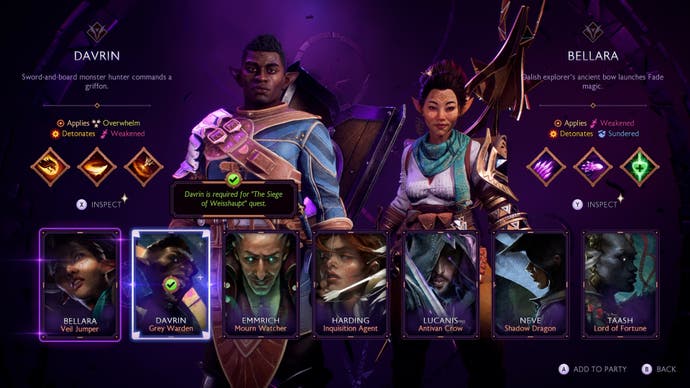

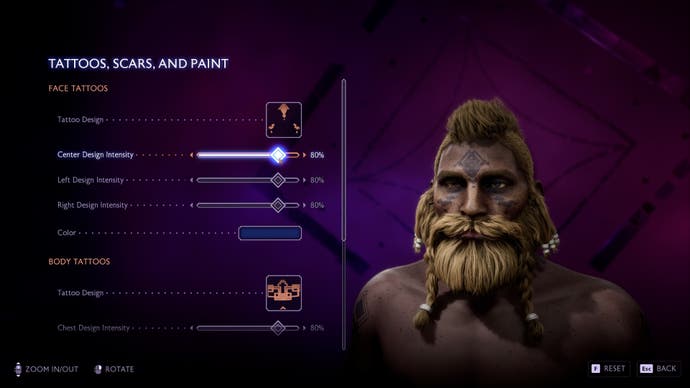
I choose my Rook to be a dwarf Rogue, after which I play the section of game you've seen demoed in trailers, in Minrathous, up to and past the point of meeting Solas and beyond - a good hour or so beyond, which means I know what happens to Varric though I can't say. I see the new Lighthouse base and the Arlathan forest, and the Crossroads beyond the Eluvian mirror. I adventure in the city of Treviso and in an underwater city, and I struggle through eerie Blight-infested towns riddled with Darkspawn and zombified inhabitants. I battle dragons, fight ogres, and clash with demons and evil mages and twisted monstrosities. I do a lot, and The Veilguard provides it all with variety and visual spectacle throughout. No two areas look or feel the same, and from a presentational point of view, it's the best I've seen a BioWare game look. The plastic sweatiness of Inquisition is gone and replaced with an almost soft-sculpted feel, and an anime-like exaggeration that is particularly striking in motion. Style over fidelity perhaps, not that it's lacking in detail.
I try all three character classes over the course of the day, at varying character levels, and I think Rogue remains my favourite. It's to do with the speed of the class; the way it twirls and tumbles around the battlefield gives the action an almost Ninja Gaiden-like feel, and there's a never-ending simple pleasure in trying to land headshots with the bow. The warrior comes a close second with its Captain America-like shield toss and ridiculously fun dropkick - run up and bam: off the edge you go! - and the mage finishes third, partly because it lacks the physicality and responsiveness of the other two, though it's by no means lifeless.
The Veilguard actually plays more like a single-player action game in combat than a traditional RPG, and the Dragon Age games before it. I went back to Inquisition recently and was startled by how slow combat felt by comparison, and by how static it seemed with characters standing around. There's none of that here. All of the classes have a full complement of combat abilities - they can all dodge or dash and perform some kind of ranged attack as standard, as well as block and attack with light or medium hits and charged variations of them - and you will frequently have to use all of them to survive. You're never safe, even at the back. Enemies won't leave you alone: they'll teleport or dash to get at you, closing gaps and hurling projectiles at you, especially bosses, which you'll usually face in semi-confined areas. There's a lot of running and dodge-rolling required to deal with them and it can lead to some very intense encounters. Note, however, there are more difficulty options in The Veilguard than I've seen in a BioWare game, too, should you want to adjust it.
You also don't have direct control over what your companions do this time, so you don't tab between them to play as them any more. They will happily unleash their own barrage of standard attacks without any input. You do, however, have some control over their special abilities, which you can deploy tactically to trigger devastating combination attacks. On a controller (I did try mouse and keyboard but the controller felt a more comfortable fit for The Veilguard) you press a shoulder button to bring up a time-pausing radial menu, where yours and your companions' special abilities are shown. Here, the game will clearly highlight any abilities that work well against the enemy you're facing, and which abilities will combo with someone else's. It's big and obvious; you can't miss what it's suggesting you do. Set it all up and big damage numbers will pop on the screen alongside dramatic visual effects. Combined attacks are hugely effective and incredibly satisfying to do.
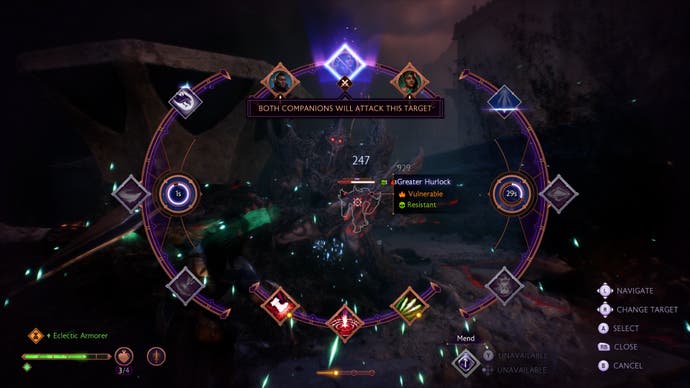

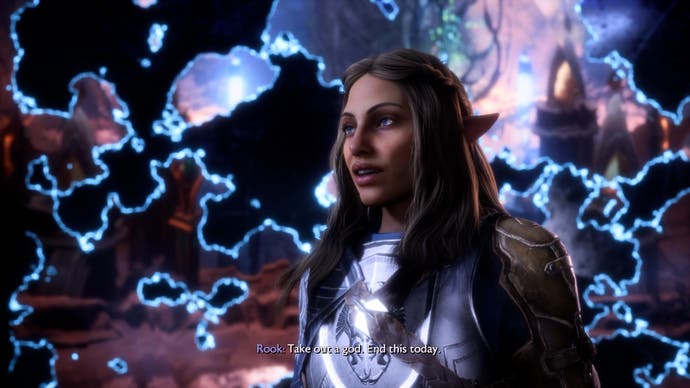
There is, though, a bit of a wait in between using them, either as you recover your class's main resource or wait for the abilities to refresh. I'm sure as you get to know the game better, you'll be able to manage resource-gain in such a way you can do special abilities more often, but I find myself waiting around a fair bit with nothing very effective that I can do - particularly when playing as a mage. I have my default attacks - I like the proton pack-like energy beam - but I still feel ineffective a lot of the time. I should add that each class has three specialisations plus a load of miscellaneous skills and abilities interlinking them - it's a pleasingly large skill tree - so it's more than possible it's the build I didn't gel with rather than the class, but the mage was still my least favourite of the classes on the day.
Combat in general, though, is great, full of energy and heft and impact, and a need for you to be paying attention. And because of the mission-based structure of the game, any encounter you come across is there for a specific reason, it's not happenstance, so there's a considered mix of enemy types and placement to make the battle interesting, which in my experience, it almost alway was.
This kind of consideration carries over into level design. Again, because you're taking the route the game knows you'll take, it's made sure the route is an interesting one, so you'll be negotiating balance beams between buildings, jumping across platforms, climbing, sliding down inclines like Commander Shepard, and doing a spot of environmental puzzling in between. It's never just running from point A to B.
In the city of Treviso, where I meet the assassin companion Lucanis - a place of night-time markets and softly lit lanterns - we zipline across rooftops at dizzying speed, giving the whole place a sense of size, and the level a sense of pace. Of course it's an illusion - you'll notice these same routes being used again and again, and though the city appears densely populated and buzzing, you can't really interact with people you see there; it's set dressing. But it's beautiful set-dressing nonetheless, and how interactive does it really need to be?
There's a lot about Veilguard that falls into this category of thinking: does an RPG really need it? You no longer stop to loot bodies in the game, for instance, which speeds up the flow of a level significantly. Instead, loot has been tidied away to chests, which you rip open with God of War-like glee, and which, if they bestow you with new equipment, often combine with pieces you already have to upgrade them. It's a sort of fantasy kind of upcycling, and it means you're never left with useless odds and ends, and that you're never nose-down in your inventory organising things, which again, smooths play considerably.
Does that make it any less of an RPG? That's the question that will surround Dragon Age: The Veilguard, I think. Some of my fears in this regard were allayed by what I saw. There's actually more companion interaction than I thought there would be. You do still have the opportunity to equip them across four equipment slots, and though you don't level them up individually, there is an equivalent Bond level that you share with them that grants similar kinds of abilities. You increase this Bond level by taking them out on missions with you (you can take up to two of them) and by talking to them back at base.
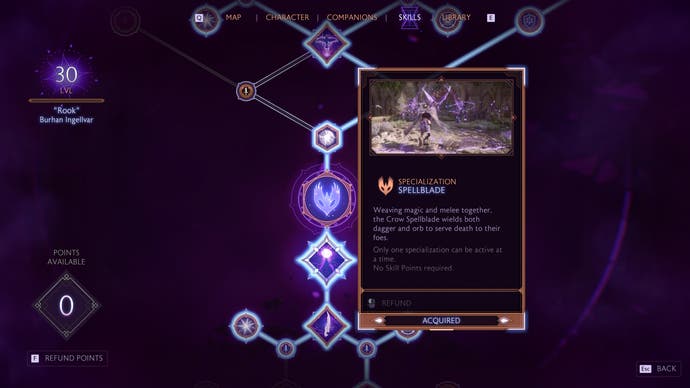

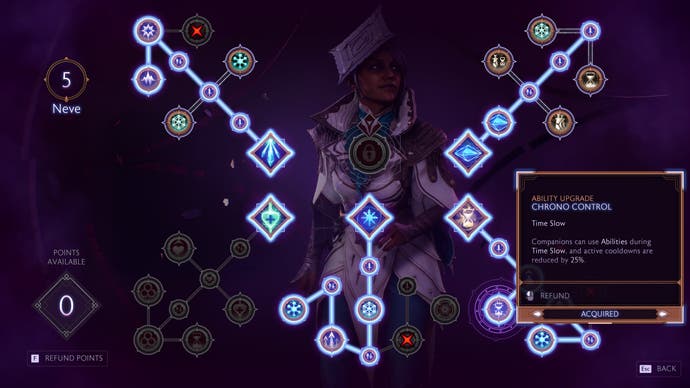
I eventually meet all of the game's companions during my play sessions, though I spend the most time with Harding, Neve, Bellara and Lucanis, all of whom I find interesting, which is a good sign. I particularly like Lucanis, a fiery Latino assassin who has, um, shifting personalities shall we say, and I find Bellara's oddball behaviour intriguing. They are not the obvious choices, and they're well characterised and brought to life, if a touch hammy, though it's a hammy series. You can of course romance them too, any of them apparently, and I dabble in a bit of it, hitting the big heart icon in dialogue while talking to Harding and then Neve and then Lucanis - I'm not fussy. It prompted some tender moments but nothing steamier.
Most of this happens back at the impressive new base, the Lighthouse, which is located inside the Fade itself - the place magic is drawn from. It's a place of floating platforms and improbable architecture, then, and over time, each of your companions will occupy different dormant parts of it, where you'll venture to meet them. To this end, there's a nice time-saving feature whereby a kind of floating light illuminates outside their buildings to denote they have a story moment within, which saves you traipsing around, and I like how the doors fly open automatically as you near them. You'll be able to customise the Lighthouse in some way, I believe, though BioWare is staying determinedly close-lipped about how.
This is your home, and it's where you and your companions will cosy up around the fire for group scenes and discussions, and where you'll receive quests as scrolls on pedestals, which is convenient. It's also where you'll venture forth on adventures through the Eluvian mirror in the basement, into the Crossroads beyond. It's full of detail and, from what I've seen, every bit the match for Inquisition's show-stopping castle in the mountains, Skyhold.

I have a good idea of how The Veilguard plays, then, but it's not enough time to answer some of the questions that still nag me, such as how much depth overall there will be. Dialogue choices to me felt more like different flavours of the same answer rather than options for differing paths, and the overall thrust of the game felt similar: one path with deviations rather than distinctly different routes. There are big choices - there are choices that change the fate of entire cities - but these are main quest moments carefully written in. They're not the many smaller choices that make up a meaningful tapestry of our own.
I've only played one act of a three-act game, though, so there's a lot more I haven't seen, and what I have seen was condensed into action-packed missions and sequences, with the exception of the slightly more open-ended Crossroads area, which you will return to time and time again. I didn't see much in the way of downtime because there wasn't time for it, so I haven't seen the quieter moments of the game.
Regardless, I'm elated to see BioWare in this kind of form again. As a cinematic action game, The Veilguard roars with quality, and as a role-playing game it provides a welcome refreshment to the density of Baldur's Gate 3, which it will no doubt be compared against - though perhaps it would be better considered a complement to. Based on what I've played, I've absolutely no doubt The Veilguard will be an enjoyable ride. My only concern is how much of a memorable one it will be.
For answers to more questions on the game, be sure to read our separate article revealing everything we learned talking to BioWare about Dragon Age: The Veilguard.










